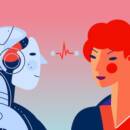Sometimes I Even Feel Hope: Celebrating Ghost In The Shell’s Speculative Sexuality
How the groundbreaking anime explored the merging of the natural and the artificial
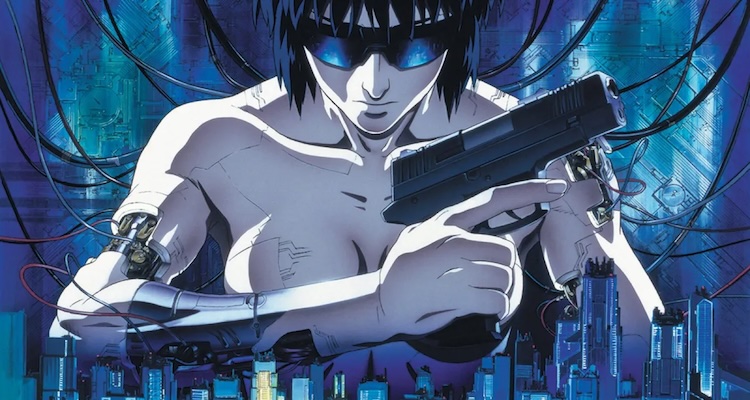
Japanese animation, anime as it is frequently called, has a long tradition of exploring humankind’s relationship with technology—including times when that relationship goes beyond intimate and into the obviously erotic.
In fact, if you look at any future speculations in anime, with regards to sexuality and technology, you’ll find not just that anime has delved into it but with a remarkably thorough and thoughtful approach.
While we know that an anime otaku (“fanboy” to use the Western meaning and not the literal Japanese translation) can more than likely come up with several others, here are just a few choice examples of anime’s future conjectures: virtual reality (.hack//SIGN), augmented reality (Dennō Coil), prosthetic limb replacement (Texhnolyze), artificial intelligence (Ergo Proxy), gender fluidity (Shangri-La), robotics (Astroboy —one of the very first anime series), and many others.
But there’s one anime franchise that has touched on each of these, and done it in ways that show what could very well be the future of not just sexuality, but the very future of humanity itself.
“I mean, have you ever actually seen your brain?”
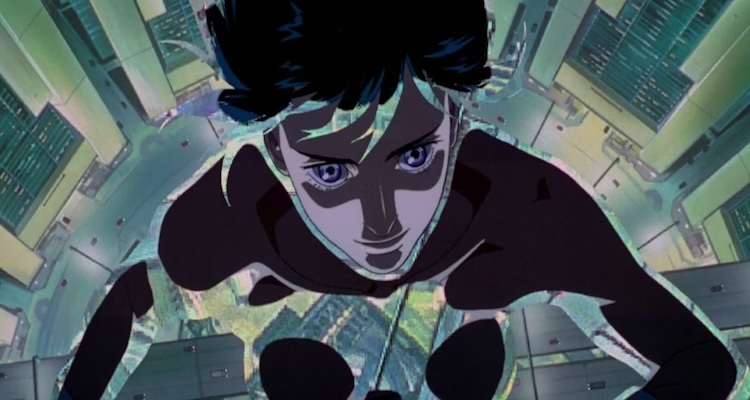
Created first as a manga (Japanese comic book) by the legendary artist/writer Masamune Shirow in 1989, Ghost in the Shell (Kōkaku Kidōtai in Japanese) became a movie in 1995, directed by Mamoru Oshii. From there the franchise has followed a long-standing Japanese tradition of re-imaginings and re-interpretations, including three animated television series, a few novels, a sequel to the first movie (Ghost in the Shell: Innocence, also by Mamoru Oshii), several other films, a few video games, and even a stage play.
Taking place in 2029 (to use the date in the original manga), the core story is that of Public Security Section 9, an elite counter-terrorist unit, headed by the main character of pretty much every incarnation of Ghost in the Shell: “Major” Motoko Kusanagi.
The Major (if the title is official or just a handle varies from series to series) is a full-body cyborg, meaning that only some of her spine and her brain is original/organic. This isn’t a rarity in this vision of the future—where partial and full-body replacement is quite common—but Kusanagi is known for being especially adept at not just operating her artificial body optimally, but also in cyber warfare, espionage, and pushing the limits of the technology envisioned by Ghost in the Shell.
“Just a whisper. I hear it in my ghost”
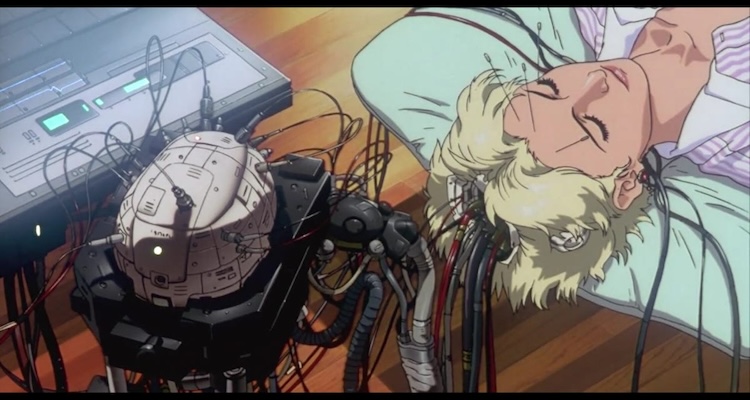
One of the big questions Ghost In The Shell raises is “what does it actually mean to be human?” In the first movie, Kusanagi states several times that she has doubts about the nature of her existence.
For example, the opening scene in the first film shows Kusanagi’s artificial body being assembled: a quasi-erotic scene until the viewer realizes it’s about as sexual as an automobile assembly line.
In her world, a typical way of determining humanity is the presence of a “ghost” of consciousness. Humans have it, robots do not. But that doesn’t stop the Major from wondering if she, with all her artificial components, has left a key part of herself behind in the process.
“It is time to become a part of all things”
Despite, or because of, her doubts, the conclusion of the first film has her accepting the invitation of The Puppet Master (a form of self-aware artificial intelligence) to merge with it: to become a unique mixture of the two minds, one organic and one cybernetic.
What’s intriguing about this is how it speaks to a possible future of sexuality. The Major may look like a woman, but this is just her prosthetic “shell”’ Her real self, whatever it may be, is what she exchanges with The Puppet Master. It’s not a huge leap of speculation to see this as a natural course for digitized human consciousness and artificial intelligence: binary sex, digital merging, then reproduction into an entirely new form of life.
As the new incarnation of the Major says at the end of the first film: “And where does the newborn go from here? The net is vast and infinite.”
“If a technological feat is possible, man will do it.”
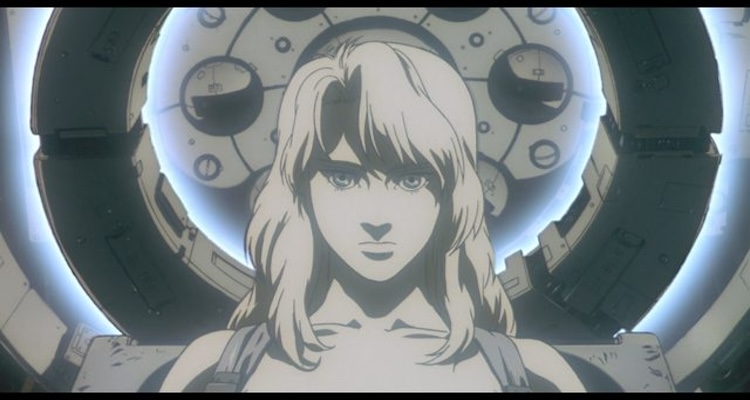
Several times in Ghost in the Shell, it’s implied that gender is just a matter of external hardware. The Major’s fellow Section 9 teammate, Batou, in fact, chastises her for staying physically female when she could just as easily put her braincase into a male chassis.
Similarly, in an episode of Ghost in the Shell: Stand Alone Complex 2nd GIG, Paz, another member of the team, is stalked by a woman so obsessed she wants to physically become him by placing her brain in an artificial copy of his body. The episode is particularly chilling when, at the end, Batou and the Major share some doubts that the surviving Paz may not actually be theirs.
The speculation this brings up is fascinating: if bodies can be anything, what happens to the entire idea of gender? And why do bodies even have to be male or female? Many other characters in Ghost are what could be called a-gender or, with a few attachments when needed, multi-gender. Once we move beyond organic bodies what will happen to sex? Ghost may not have the answer but the franchise does pose some interesting questions.
A Solid State Society

It’s questions like this that make Ghost such an interesting anime franchise. Another way it looks at the future of humankind, and of course sex, is raised in the film (tied into the Stand Alone Complex series): Solid State Society.
Without going into too much of the story, which deals with collective consciousness, the vanishing mediator, and more heady stuff, there is a moment where the Major, after stepping away from Section 9, has set up shop for herself as an investigator. In her office/workspace, she has several artificial bodies that she can operate independently. In fact, a key point of the story is that one of these split-off selves acts a bit too independently.
When we are able to convert our minds, our ghosts, into digital versions why shouldn’t we be able to do what the Major was able to — if not more? After all, a program can be run on more than one platform at a time. Separated digital minds could be later synced together, merging the two versions into a combined whole again.
Is this sex? If not—why not? It could almost be seen as a form of complex masturbation: making love to Your own mind, or a version of it.
Bodies, again, could be used for whatever explorations a person wants to enjoy. You could take your male body out on a date with yourself in a female body, or any combination of gender, or even a new one, you may desire. The net, indeed, would be extremely vast and absolutely infinite.
“And where does the newborn go from here? The net is vast and infinite.”
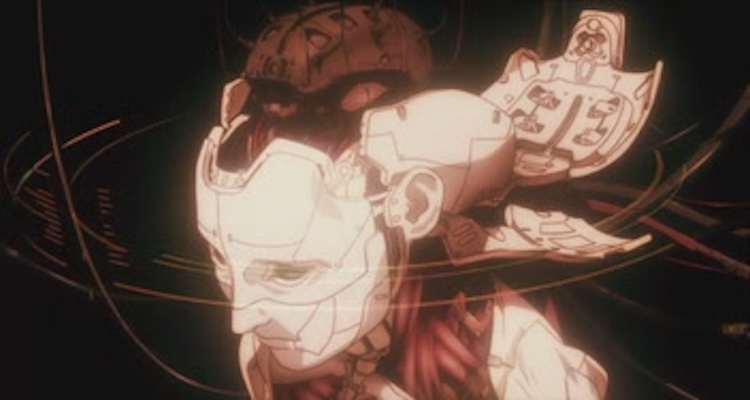
Ghost in the Shell is a remarkable franchise, delving as it does into humanity, physical identity, and artificial consciousness.
And there’s sex. Even its very first appearance, in Masamune Shirow’s manga, there was a rather notorious explicit sex scene in virtual reality with the Major. But while there is certainly eroticism in every incarnation of the Major’s adventures, there’s also at its heart a penetrating examination of where we all might be heading.
Again, Ghost in the Shell may not have all the answers, but the questions it raises are ones we all will have to face, learn from and use to grow as human—whatever that may be.
Or, as the Puppet Master puts it: “All things change in a dynamic environment. Your effort to remain what you are is what limits you.”
Image sources: IMDB
Leave a reply
You must be logged in to post a comment.

















